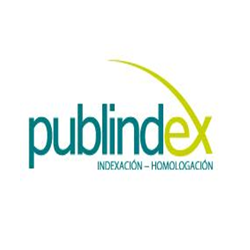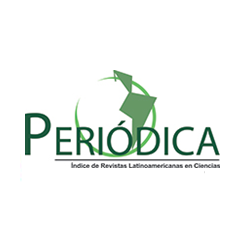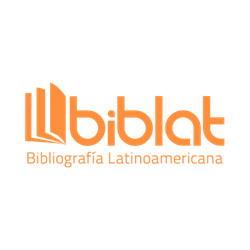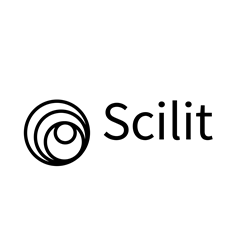Evaluation of the effect of essential oil formulations from Eucalyptus species against Arion spp.
DOI:
https://doi.org/10.17981/ingecuc.19.2.2023.11Keywords:
phytopesticide, garden slugs, contact, ingestion, mortality, lethal doseAbstract
Introduction— Slugs of the genus Arion are important pests of many crops, causing considerable decreases in yields. Given the need to meet food demand worldwide, it is important to have pest management systems, plant resources are natural alternatives for this purpose.
Objective— Evaluate the effect of formulations of essential oils of Eucalyptus globulus and Eucalyptus cinerea in the control of Arion spp.
Methodology— Two trials were developed with completely randomized designs with 5 treatments and 10 repetitions (one for the effect by contact and the other for ingestion), spraying on Arion spp. slugs, concentrations at 100 and 200 ppm of essential oils of Eucalyptus globulus or Eucalyptus cinerea. The corresponding analyzes of variances were carried out.
Results— The affectation of mobility for Arion spp., was very similar for all treatments. The formulations of both species of Eucalyptus caused mortality of Arion spp by contact since the 9th day and by ingestion on the 4th day, higher than 85% by contact, and 95% by ingestion. The TL50. per contact varied between 10.31 and 10.12 days for the essential oil of E. globulus and between 13.31 and 6.69 days for that of E. cinerea, while by ingestion they ranged between 7.31 and 5.55 days for E. globulus and between 8.22 and 6.6 days for E. cinerea at 100 and 200 ppm respectively.
Conclusions— The formulations of both Eucalyptus species caused mortality by contact since the 9th day and by ingestion since the 4th day, while the TL 50 were relatively lower by ingestion for E. globulus.
Downloads
References
M. Serre. Manejo de babosas en el cultivo de girasol en siembra directa. Departamento de Agronomía, Pioneer Argentina S.A. Dupon Company. 2005. https://www.pioneer.com/CMRoot/International/Argentina_Intl/AGRONOMIA/con_agric_inv_lotes/IL_Manejobabosa_girasol_05.pdf
N. Herrera, L. Castellanos. Informe sobre la incidencia de moluscos plaga en organopónicos del municipio de Cienfuegos, Cuba. Centro Agrícola, vol.40, no. 1, pp. 89-90. 2013
N. Herrera, B. López, L. Castellanos M. Nodarse, Y Perez. (2013). Incidencia de los moluscos plagas en los organopónicos del municipio de Cienfuegos. Centro Agrícola, vol. 40, no. 4pp. 49-55. 2013.
V. Cañedo, A. Alfaro, J. Kroschel. Manejo integrado de plagas de insectos en hortalizas. Principios y referencias técnicas para la Sierra Central de Perú. Centro Internacional de la Papa (CIP). Lima, Perú. 2011. http://cipotato.org/wp-content/uploads/2014/08/005739.pdf.
ICA. (2012). Manejo fitosanitario del cultivo de hortalizas. Bogotá D.C. Colombia.
L.M. Constantino, S.Y Gomes, P. Benavides. Descripción y daños causados por las babosas Colosius pulcher y Sarasinula plebeia en el cultivo de café en Colombia. Centro Nacional de Investigación de Café (Cenicafé). Chinchiná, Caldas, Colombia. 2010.
ICA. Manejo fitosanitario del cultivo de la papa (Solanum tuberosum subsp. andigena y S. phureja). Bogotá D.C. Colombia. 2011.
ICA. Manejo fitosanitario del cultivo de la mora (Rubus glaucus Benth). Bogotá D.C. Colombia. 2011.
G.C.A Gualdrón, G.B.A Maldonado, V.D.R. Espitia, S.J.N. García. Aproximación al caso de desarrollo local de la zona rural del municipio de Pamplona. Universidad de Pamplona, Norte de Santander, Colombia. FACE: Facultad de Ciencias Económicas y Empresariales. vol. 17 no. 2, pp. 142-154. 2017.
L. Castellanos, J. Serrano. Pérdidas económicas por babosas en fresa (Fragaria × ananassa, Duch) bajo las condiciones de Pamplona, Norte de Santander. FACE, vol.20, no1, 49 – 60. 2020.
C.A. Pabuence, M.A. Sanabria. Caracterización de babosas en hortalizas de la Provincia de Pamplona. Tecnología Agropecuaria, Unidad de Ingeniería e Informática, Instituto Superior de Educación Rural (ISER). Pamplona, Colombia. 2004.
B. Hernández, N., Guerrero, M. Sierra. Determinación de los daños en babosas (Arion distinctus) causado por la tierra diatomea a diferentes concentraciones bajo condiciones de laboratorio en el ISER. Revista Distancia Al Día, vol. 1, no 1. pp.1-9. 2015.
A.C. Méndez, L. Castellanos. Eficacia de la tierra de diatomeas contra Helix aspersa en condiciones in vitro en Pamplona, Norte de Santander. Journal of Negative & No Positive Results, vol. 2 no. 12, pp. 659-666. doi:10.19230/jonnpr.1698. 2017.
M.C. Rizzo, M. Cobos, L. Castellanos, W.M. Becerra Rozo. Influence of soil conditions on eight crops on the incidence of slugs in the Monte Adentro village, Pamplona, Norte de Santander. Bistua, vol.17, no 3, pp.166-178. 2019 ISSN: 0120-4211, http://revistas.unipamplona.edu.co/ojs_viceinves/index.php/BISTUA/issue/view/203
J. Iglesias, B. Speiser, B. Distribution of Arion hortensis s.s. and Arion distinctus in Northern Switzerland. Journal of Molluscan Studies, pp. 209-214. 2000.
J.D. Harwood, A.K. Thomas, R.J. Mc Donnell, T.D. Paine. A Field Guide to the Slugs of Kentucky. University of Kentucky College of Agriculture. Lexington, Kentucky. 2010.
R.M. Cobos., W.M. Becerra–Rozo, L. Castellanos. Riqueza y abundancia de las babosas en cuatro cultivos de Pamplona, Norte de Santander, Colombia. Revista de la Facultad de Ciencias Básicas. vol. 17, no. 2, pp. 229-233. 2019.
A. Méndez, C. Castellanos. Effectiveness of diatomaceous earth and lime on arionids and agriolimacids. Ciencia & Tecnología Agropecuaria. vol. 20, no. 2, pp. 579-59. 2019. DOI:https://doi.org/10.21930/rcta.vol20_num3_art:1587
L. Castellanos, J. Serrano, W.M. Becerra. Preferencia por morfoespecies de babosas en diferentes cultivos y ambientes del municipio Pamplona, Norte de Santander. revista ambiental agua, aire y suelo, vol. 1, no. 9, pp. 1-9. 2020.
BIOPEDIA. Babosa común de jardín (Arion distinctus). https://www.biopedia.com/babosa-comun-de-jardin-arion-distinctus/. 2017.
S. Gliessman. Transforming food systems with agroecology. Agroecology and Sustainable Food Systems, vol. 40, no.3, pp. 187-189. 2016. DOI:10.1080/21683565.2015.1130765
X.Y. Yáñez, O.F. Cuadro. Composición química y actividad antibacteriana del aceite esencial de las especies Eucalyptus globulus y E. camaldulensis de tres zonas de Pamplona (Colombia). Bistua, Vol. 10, no. pp. 52-61. 2012.
C. Quintero, L. Castellanos, W. Becerra-Rozo. Possibilities of the alternative management of mollusk pests in agricultural crops. A Review”. INGE CUC. vol. 18 no. 1. 2022. DOI:10.17981/ingecuc.18.1.2022.01
A.G. Ponce R. Fritz C. Del Valle S.L. Roura. Antimicrobial activity of essential oils on the native microflora of organic Swiss chard, Lebensm. Wiss. Technol., vol. 36, pp. 679–684. 2003.
M.H. Salari, G. Amine, M.H. Shirazi R. Hafezi, M. Mohammadypour Antibacterial effects of Eucalyptus globulus leaf extract on pathogenic bacteria isolated from specimens of patients with respiratory tract disorders, Clinical Microbiology and Infection, 12 no. 2, pp.194-196. 2006.
A.J. Mossi, V. Astolfi, G. Kubiak, L. Lerin, C. Zanella, G. Toniazzo, D. de Oliveira, H. Treichel, I.A. Devilla, R. Cansian, R. Restello. Insecticidal and repellency activity of essential oil of Eucalyptus sp. against Sitophilus zeamais Motschulsky (Coleoptera, Curculionidae). J. Sci. Food Agric. vol. 91, no. 2, pp. :273–277. 2011
V. Trejo-Ramírez V., Trejo-Márquez Ma. A., S. Pascual-Bustamante, A. Vargas. Extracción de aceite esencial de eucalipto y su aplicación como agente antifúngico en un envase activo para conservación de frambuesa. Rev. Iber. Tecnología Postcosecha, vol. 16, no. 2 pp.228-233 2015..
R. González-Guiñez, G. Silva-Aguayo, A. Urbina-Parra, M.G. González. Aceite esencial de Eucalyptus globulus Labill y Eucalyptus nitens H. Deane & Maiden (Myrtaceae) para el control de Sitophilus zeamais Motschulsky. Chilean J. Agric. Anim. Sci. vol. 32 no.3, pp. 204-216. 2016. DOI:10.4067/S0719-38902016005000005
N. Martineli, N. Araújo, C. Perera, J.P. Pereira, N. Katz. Atividade moluscicida e cercaricida de diferentes espécies de Eucalyptus. Revista da Sociedade Brasileira de Medicina Tropical vol. 23, no. 4, pp. 197-199. 1990.
A. R. Mohamed, F. G. Amira. Essential oils and their components as promising approach for gastropod mollusc control: a review. Journal of Plant Diseases and Protection vol. 128, pp. 923–949. 2021. https://doi.org/10.1007/s41348-021-00484-5.
L. Castellanos, E. A. Mora. Preliminaries on the use of baits with eucalyptus extracts for the control of slugs in Pamplona, Colombia, Revista Infometric@ - Serie Ingeniería, Básicas y Agrícolas. vol. 3 no.1 1-7, 2020.
C. Salvio, A. Faberi, A. López, P. Manetti, P. N. Clemente. The efficacy of three metaldehyde pellets marketed in Argentina, on the control of Deroceras reticulatum (Müller) (Pulmonata: Stylommatophora). Spanish Journal of Agricultural Research, vol. 6 no. 1. 2008..http://dx.doi.org/10.5424/sjar/2008061-295
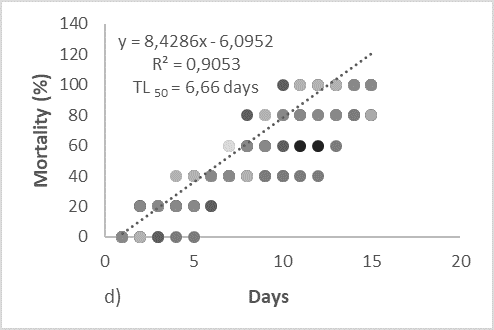
Published
How to Cite
Issue
Section
License
Copyright (c) 2023 INGE CUC

This work is licensed under a Creative Commons Attribution-NonCommercial-NoDerivatives 4.0 International License.
Published papers are the exclusive responsibility of their authors and do not necessary reflect the opinions of the editorial committee.
INGE CUC Journal respects the moral rights of its authors, whom must cede the editorial committee the patrimonial rights of the published material. In turn, the authors inform that the current work is unpublished and has not been previously published.
All articles are licensed under a Creative Commons Attribution-NonCommercial-NoDerivatives 4.0 International License.


 English
English
 Español (España)
Español (España)

